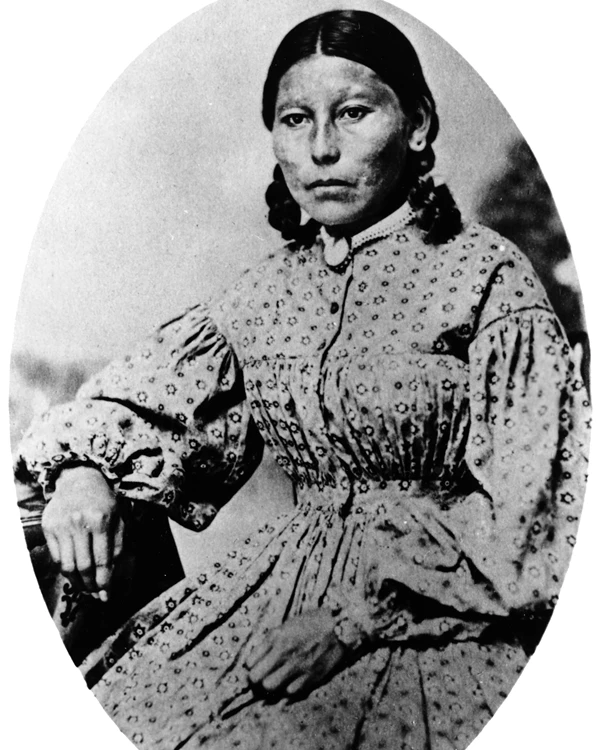Last updated: November 21, 2025
Person
Ameohtse’e Ochinee Prowers

History Colorado
Ameohtse’e (Amache/Walking Woman) was the daughter of O’kenehe (Ochinee/One-Eye), a prominent Cheyenne Chief who was murdered during the Sand Creek Massacre.
In 1861, Ameohtse’e married John Prowers, who had come west to work with William Bent at Bent’s New Fort.
Her father helped negotiate a treaty between the United States and the Cheyenne and Arapaho Tribes to safely camp along Sand Creek during the winter of 1864–1865. At that time, he met with the Territorial Governor, John Evans. Colonel John Chivington certified that her father was a man of good character and a "friendly Indian." Before the attack, the Prowers family, including Ameohtse’e, were held hostage to prevent them from warning those at Sand Creek of the eminent attack.
In 1865, the Treaties of the Little Arkansas gave 160-acre land allotments to some tribal members that lost family members at Sand Creek. Ameohtse’e, her sisters, and mother were given land grants along the Arkansas River. John and Ameohtse’e worked together in their business and personal pursuits. They settled along the Santa Fe Trail in Boggsville, Colorado in 1867. They raised nine children with the cultures of people of European and Native American heritage. Ameohtse's always spoke English at home but also taught her children words from the Cheyenne language and Cheyenne traditions. Ameohtse’e's mother also taught her grandchildren of the ways of the Cheyenne people. As Prowers purchased land allotments from other Sand Creek survivors and descendants, including Julia Bent, their ranch grew along the Arkansas River.
With Ameohtse’e help, John Prowers was considered the first and largest rancher in the area. They bought their first cattle in 1862 and by 1881, they had 15,000 head of cattle. After John Prowers died in 1884, Ameohtse’e moved to Boston in 1890 with her second husband, Daniel Keesee. She died in Cambridge, MA in 1905.
During WWII, the government built the Granada Relocation Center as an incarceration site for Japanese Americans. Confusion at the post office between the center and the town of Granada prompted the need for a new name. The Anglicized version of Ameohste'e, Amache, was proposed. The people incarcerated at the center embraced the unofficial name, often referring to themselves at "Amacheans." The connection between the incarceration site and the Cheyenne goes beyond a name. The land used for the center is part of ceded treaty lands of the Cheyenne, Arapaho, Kiowa, and Comanche. Other Tribes used the lands for trade and traditional gatherings. The land is still significant to Indigenous traditions.
In 2018, she was inducted into the Colorado Women's Hall of Fame.
